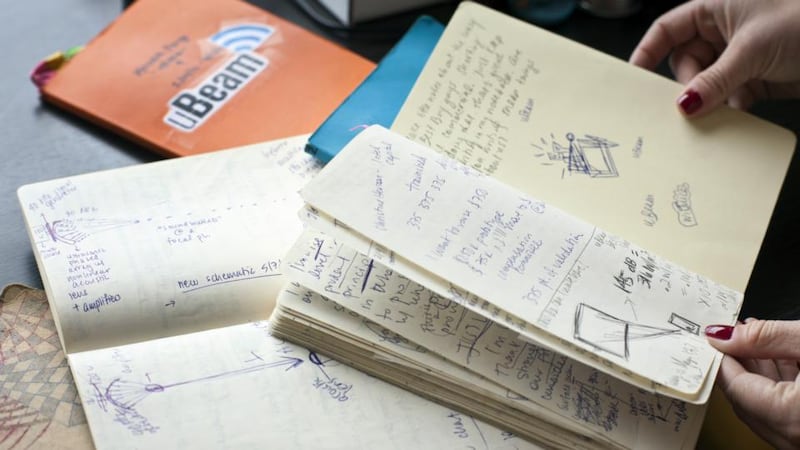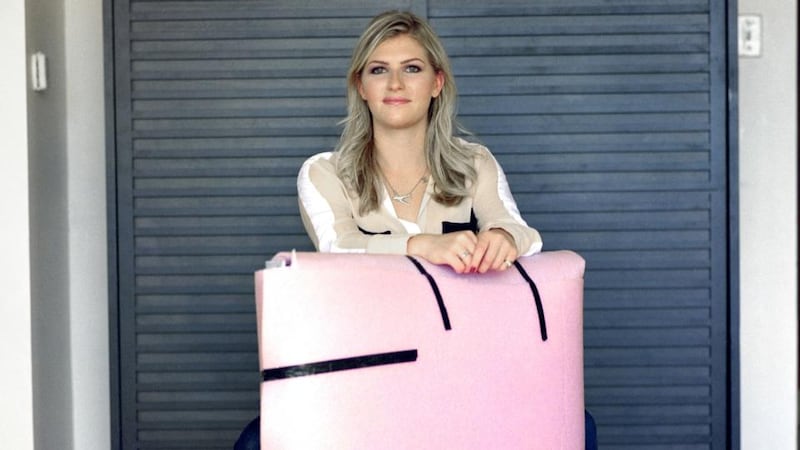Sometimes, there is an actual eureka moment. For Meredith Perry, it was in late 2010, during her senior year studying astrobiology at the University of Pennsylvania. She was searching for an idea to enter into the college’s innovation competition.
“It was my last year to do it,” she said, “so I literally would just carry around a notebook and write down any annoyances, because that would be an opportunity to solve a problem and have an invention.”
An “professional Googler” she’d been researching all day on her computer when she decided to pack it in for the night.


“I was just standing in my room,” she said, “wrapping up my laptop charger and trying to fit it into my bag and suddenly it occurred to me: wow, this is so archaic. Why are we using these 20-foot wires to plug in our quote-unquote wireless devices?”
“See past old paradigms” is one of those cheesy riffs one might hear from an innovation expert working the business speakers’ circuit. Yet here it was, a question that inched just past what was simply accepted: why, in a wireless age, do we still have electrical wires?
As Perry soon learned, there are very good reasons why we don’t beam electricity through the air. Although you can transmit the entire electromagnetic spectrum, from radio waves to gamma rays, there are problems.
“I realised that anything on the right half of the spectrum was too dangerous to beam,” she said, “and anything on the left half of the spectrum, that was closer to radio, was either too inefficient or tightly regulated by the government.”
So she started looking elsewhere and came upon piezoelectricity – a form of charge that is created in certain crystals and ceramics when vibrated. If you have seen Internet assertions about T-shirts “that charge your mobile phone while you wear them”, or about boots on the ground creating the charge for a soldier’s radio, you are familiar with the idea of piezoelectricity. Those applications rely on something that’s in motion.
And here’s where the second eureka happened – enabling her to see how she might build a device to wirelessly charge a battery in a mobile phone or a computer from across a room.
“How do I create vibration in the air without actually moving something?” The answer came instantly – it was almost like a stoner’s aha: “Sound is vibration in the air.”
Sound frequency “is basically how many cycles per second air is being pushed through a space”, Perry says.
“We have little hairs in our ears that vibrate in response to sound. We interpret that change in air pressure as sound. But sound is something that exists outside our heads. It’s just air particles moving in an arranged fashion.”
So was it possible to deploy sound waves that humans couldn’t hear or feel, in order to charge a phone? Nothing in her training prepared Perry for this kind of research. She was an astrobiologist, after all. She was just 21 and had spent the previous two summers interning at NASA.
So she did what most everybody else does. She clicked on Wikipedia. She started with the “ultrasound” page, then “acoustic.” Soon enough, she was reading academic papers at the forefront of various disciplines.
Her idea, she discovered, meant marrying the fields of sound, electricity, battery technology and other sub-specialties.
“It was such a multidisciplinary idea,” she said, “and everyone in each different department basically told me that there was no way that you could get past all the hurdles.”
She kept running into the same genre of problem. “I was working with a couple of different people at the beginning who would say there was no way to get this high-power sound over this distance without creating shock waves,” she said. “Of course, I would have my 10-minute panic attack and think the whole thing was over. Then I would do some research and figure out how to achieve high-power sound without creating shock waves.”
Afterwards, she said, “I would go back to that person and he would say, ‘Oh, yeah, that should work’.” Each expert seemed to dwell in his own private silo, so that whenever she crossed from one discipline to another, she would run into the same wall of constricted thinking.
Even after winning attention at a D: All Things Digital conference, where she transmitted power an impressive 3 feet using piezoelectrical technology, she still couldn’t attract start-up money.
So she decided to research who had financed "crazy things" and gained the attention of Peter Thiel, the former PayPal entrepreneur whose Founders Fund provides venture capital for unusual ideas.
Scott Nolan, one of the Founders Fund members who most enthusiastically backed Perry, remembered precisely what made her proposal stand out. "We invest in low single-digit percentages of what we see," he said, but Perry had thought far beyond just the mechanics and technology of her idea. She had already done the advance work of contacting manufacturers and potential institutional customers.
After the Founders Fund signed on, more than a half-dozen venture capitalists also kicked in to create $1.4 million in startup financing including Mark Cuban; Yahoo chief Marissa Mayer; the Andreessen Horowitz firm; and even Troy Carter, Lady Gaga's manager. At first, Perry thought of calling the company "Taking Charge," but settled on "uBeam." It now has a half-dozen engineers working on it.
Perry has always looked out at the world and seen petty annoyances that she then tries to correct. In the third grade, she made her own reading glasses with little lights on them. Later, she devised a bicycle umbrella, but never pursued it. “I wondered if I really wanted to pour my life into something like this,” she recalled. “Am I passionate about umbrellas?”
In the end, it’s the problem-solving and the fiddling that keeps her interested. “It’s like being on crack – don’t quote me on that – but it’s just so much fun you can get sucked into solving the problem and all you want to do is tell everyone about it.”
With venture capital to create wireless charging, it’s still a pleasure, if a bit different from bicycle umbrellas. “Now I’m not allowed to tell anyone anything,” she said, “which is less fun.” – (New York Times News Service)














